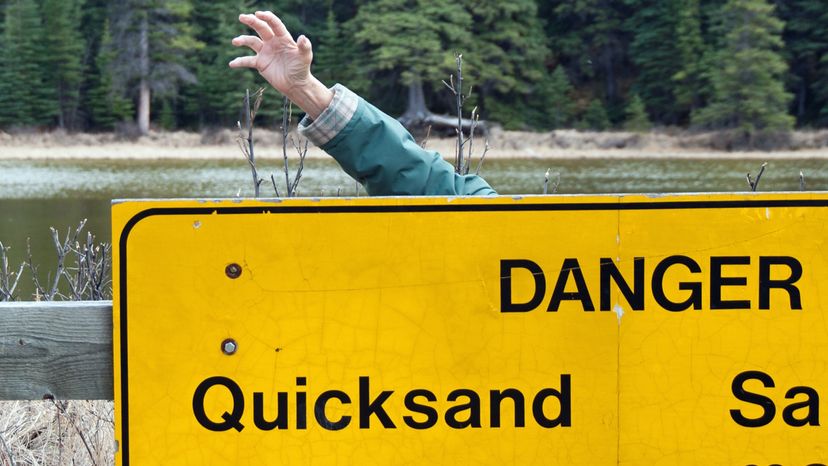
With quicksand, the more you struggle in it the faster you will sink. If you just relax, your body will float in it because your body is less dense than the quicksand.
How many times have you watched a movie where the hero is sucked down into a pit of quicksand, only to be saved at the last minute by grabbing a nearby tree branch and pulling himself out?
Advertisement
If you believed what you saw in movies, you might think that quicksand is a living creature that can suck you down into a bottomless pit, never to be heard from again. But no -- the actual properties of quicksand are not quite those portrayed in the movies.
Quicksand is not quite the fearsome force of nature that you sometimes see on the big screen. In fact, the treacherous grit is rarely deeper than a few feet.
It can occur almost anywhere if the right conditions are present. Quicksand is basically just ordinary sand that has been so saturated withwaterthat thefrictionbetween sand particles is reduced. The resulting sand is a mushy mixture of sand and water that can no longer support any weight.
If you step into quicksand, it won't suck you down. However, your movements will cause you to dig yourself deeper into it. In this article, you will learn just how quicksand forms, where it's found and how you can escape its clutches if you find yourself hip-deep in it.
Next, we'll find out how the ground shaking beneath your feet can lead to sand slipping beneath your weight. So head to the next page -- quick.
Advertisement





